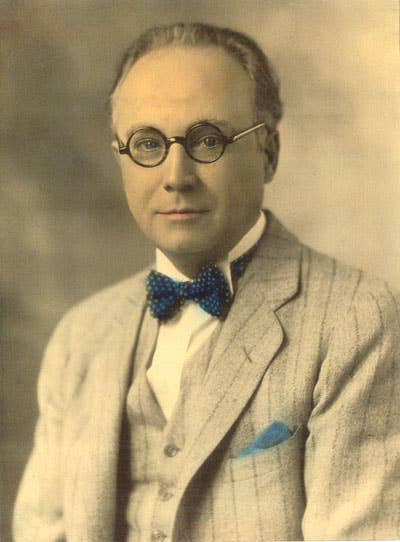
Slice of Life
The secret history of America's sandwich bread
Ten years ago, while writing a history of Livingston County, Missouri, I stumbled upon an article in the Chillicothe Constitution-Tribune, where I work as the news editor, announcing that sliced bread would go on the market the next day, July 7, 1928. "Chillicothe Baking Co. the first bakers in the world to sell this product to the public," the headline stated. An ad in that same edition listed stores that would sell this new bread. I was floored. Local historians had been unaware of sliced bread's connection to our town, nor had they known about Otto Frederick Rohwedder.
Rohwedder, a jeweler from Daven port, Iowa, had conceived the idea for a bread-slicing machine back in 1912, but his first blueprints were destroyed in a fire. By 1928, he had again secured the finances to manufacture a power-driven, multibladed slicer measuring about six feet long and five feet tall. The machine would push loaves through a series of alternating blades; pins would then be inserted at either end of the loaves, holding them together snugly until they were wrapped.
Rohwedder talked to housewives throughout America to determine the desired slice thickness: slightly less than one-half inch. Many revisions later, his machine was capable of slicing 4,000 loaves per hour and handling bread of up to 18 inches long.
But the key to Rohwedder's success lay with bakers. After some of America's biggest bakeries rejected his notion that fresh bread could be commercially sliced, packaged, and sold, Rohwedder turned to baker Marion "Frank" Bench, who worked at Chillicothe Baking Company. The two had previously shared a patent on a bread display rack, and Bench was ready to give sliced bread a try. The results were astounding: Bread sales at Chillicothe increased by 2,000 percent within a few months. The following year, Rohwedder took orders for hundreds of machines.
"The telephone rang day and night," recalled Rohwedder's son, Richard, who traveled from Arkansas to Chillicothe to share his father's archives with me.
The Depression forced Rohwedder to sell his patent. But his brainchild persists as the benchmark against which all inventions are compared: "It's the greatest thing," we say, "since sliced bread." —Catherine Stortz Ripley
Keep Reading
Continue to Next Story










